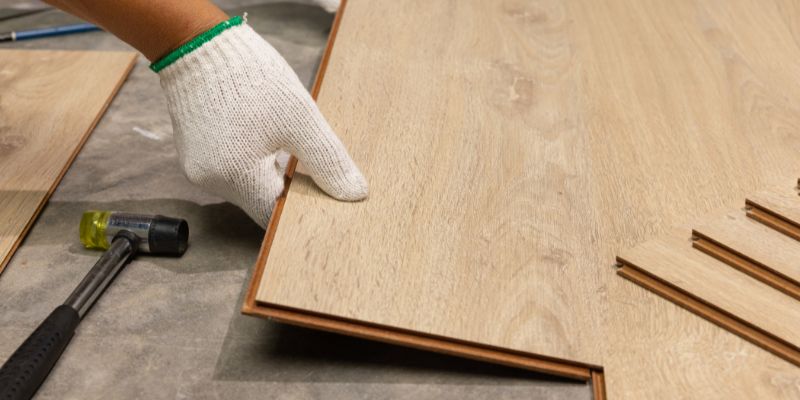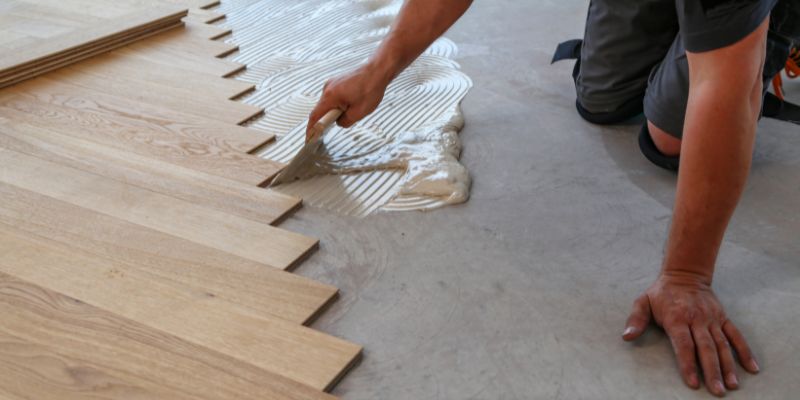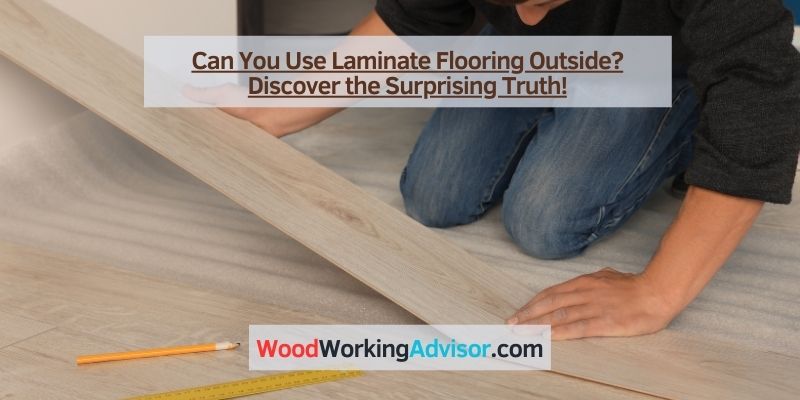No, laminate flooring is not suitable for outdoor use due to its vulnerability to moisture and temperature changes. However, there are other flooring options like composite decking or outdoor vinyl flooring that are specifically designed and more durable for outdoor spaces.
These materials are resistant to water damage, fading, and are easy to maintain. Whether you want to create a cozy patio or a beautiful outdoor deck, choosing the right flooring can greatly enhance your outdoor living experience. We will discuss the limitations of laminate flooring outside and explore alternative outdoor flooring options that are long-lasting and aesthetically pleasing.

Factors To Consider Before Using Laminate Flooring Outside
When it comes to outdoor flooring options, laminate flooring might not be the first choice that comes to mind. However, with advancements in technology, laminate flooring has become more durable and versatile, making it a viable option for outdoor use. Before you decide to use laminate flooring outside, there are several important factors to consider:
Weather Resistance
Laminate flooring, especially those designed for outdoor use, should have excellent weather resistance. It should be able to withstand constant exposure to the elements without warping or deteriorating. Make sure to choose laminate flooring that is specifically labeled as weather-resistant.
Moisture Resistance
Outdoor environments are prone to moisture, such as rain, dew, or even water splashes from activities like swimming or gardening. Laminate flooring for outdoor use should have exceptional moisture resistance. It should be able to repel water and prevent it from seeping into the flooring, which could cause swelling or mold growth.
Uv Protection
The sun’s harmful ultraviolet (UV) rays can cause discoloration and fading in many materials. Laminate flooring for outdoor use should possess effective UV protection to prevent color fading and maintain its aesthetic appeal over time. Look for laminate flooring that is specifically designed to resist fading from UV exposure.
Temperature Fluctuations
Outdoor environments experience temperature fluctuations, which can affect the stability of the flooring. Laminate flooring suitable for outdoor use should be able to withstand both high and low temperatures without warping or expanding. It should have a high tolerance for temperature changes to ensure its durability in various climate conditions.
Installation Requirements
Installing laminate flooring outside may have different requirements compared to indoor installation. The subfloor should be well-prepared, level, and clean to ensure a proper installation. Moreover, outdoor laminate flooring may require additional precautions, such as sealing the edges and using appropriate adhesives or fasteners to ensure stability and longevity.
In conclusion, before considering laminate flooring for outdoor use, it is crucial to evaluate its weather resistance, moisture resistance, UV protection, tolerance for temperature fluctuations, and specific installation requirements. By carefully considering these factors, you can choose a suitable laminate flooring that will withstand the challenges associated with outdoor environments and enhance the beauty and functionality of your outdoor living spaces.

Alternatives To Laminate Flooring For Outdoor Use
While laminate flooring is a popular choice for indoor spaces, it is not suitable for outdoor use. The exposure to sun, rain, and temperature variations can cause laminate flooring to warp, fade, and deteriorate over time. Thankfully, there are several alternative options available that are specifically designed to withstand the elements and provide a durable and long-lasting flooring solution for outdoor areas. Let’s explore some of these alternatives:
Porcelain Tiles
Porcelain tiles are an excellent choice for outdoor flooring, offering a combination of durability, versatility, and aesthetic appeal. These tiles are made from dense clay and fired at high temperatures, making them highly resistant to moisture, frost, and extreme temperature changes. With a wide range of colors, patterns, and textures available, porcelain tiles can seamlessly blend with the surrounding landscape or provide a striking contrast to create a unique outdoor space.
Vinyl Plank Flooring
Vinyl plank flooring is another popular alternative for outdoor areas. It is designed to withstand the elements and can be installed directly over a concrete surface or a prepared subfloor. Vinyl plank flooring is highly resistant to moisture, stains, and fading, making it ideal for areas exposed to rain and sunshine. With its realistic wood-like appearance, vinyl plank flooring offers the beauty of hardwood without the maintenance, making it a cost-effective and low-maintenance choice for outdoor spaces.
Decking Materials
When it comes to outdoor flooring, decking materials are a classic and versatile option. From natural wood to composite materials, decking provides a sturdy and comfortable surface for outdoor living. Hardwood decking, such as teak or cedar, offers a timeless and natural look, while composite decking combines the durability of plastic with the aesthetics of wood. Whichever material you choose, decking requires regular maintenance to preserve its appearance and protect it from the elements. By sealing or staining the decking boards, you can ensure they stay in top condition for years to come.
Comparison Table:
| Alternative | Advantages | Disadvantages |
|---|---|---|
| Porcelain tiles | – Durable and resistant to moisture – Wide variety of colors and designs – Low maintenance |
– Can be expensive – Installation requires professional assistance |
| Vinyl plank flooring | – Resistant to moisture, stains, and fading – Easy to install – Affordable |
– Limited color and design options – Can be susceptible to scratches |
| Decking materials | – Natural and aesthetic look – Versatility in materials and finishes – Can be refinished or repaired |
– Requires regular maintenance – Prone to weathering and wear |
When it comes to choosing the right alternative for your outdoor areas, consider factors such as durability, maintenance requirements, budget, and aesthetic preferences. Each option has its own advantages and disadvantages, so it’s important to weigh your priorities and select the flooring material that best suits your needs and enhances the beauty of your outdoor space.
Conclusion
While laminate flooring can be a cost-effective and stylish option for indoor spaces, it is not recommended for outdoor use. The material is not designed to withstand the elements and may warp, fade, or deteriorate when exposed to moisture, temperature fluctuations, and UV rays.
To ensure the longevity of your flooring, it is best to choose materials specifically made for outdoor installation.



4 thoughts on “Can You Use Laminate Flooring Outside? Discover the Surprising Truth!”